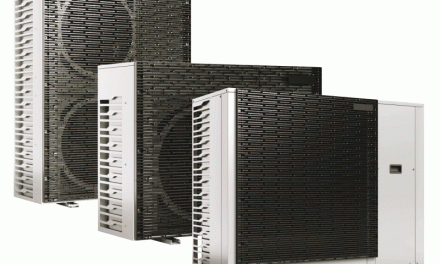 Robin Wilkinson, CEO of Metmotec discusses how older off-line digital electricity meters can be easily brought on-line by connecting to their ‘local optical port’ using new optical ‘probes’ (optical interface cables) that offer secure connection means and interfaces to communications networks, not just to hand-held computers
Robin Wilkinson, CEO of Metmotec discusses how older off-line digital electricity meters can be easily brought on-line by connecting to their ‘local optical port’ using new optical ‘probes’ (optical interface cables) that offer secure connection means and interfaces to communications networks, not just to hand-held computers
The original idea for an optical interface was to briefly connect the meter to a hand-held computer using probes with a weak magnetic attraction – 5 Newtons according to the standard). Many older digital meters (that store profile data) have been supplied over the last 20 years but operate off-line. It is now possible to turn such meters into ‘smart’ meters at a fraction of the cost of modern replacements.
The main standard for optical two -way communication ports that applies in the UK is IEC 62056 (also known as ‘Flag’ and ‘1107’). The brief terms ‘Flag Optical Port/Probe/1107 Standard’ will be used.
The Flag Optical Port is a circular feature on the face of the meter containing a flat ferromagnetic ring with a central infra-red LED and sensor. To add a little confusion, some meters have an optical pulse output (i.e. unidirectional) in the form of a visible pulsing LED (a pulse representing an amount of energy consumption); in some cases these appear in a circular feature similar to the Flag Optical Port, though often without the ferromagnetic attachment ring.
Many models of ‘advanced’ (digital) meters of industrial and commercial classes produced since 1990 feature a Flag Optical Port, present whether the meter has, or has not, a local electrical communications port (TTL, RS232, RS485 or Current Loop, etc). The optical port is not normally found on simple panel meters, but rather on meters that store consumption history (‘profiles’).
The Flag Optical Port allows two-way communication in the same way as an electrical communications port. One difference is that the Optical Port connects with the Flag Probe magnetically (the probe contains the magnets), whilst electrical communications ports latch via ‘live’ terminal blocks or connectors.
A second key difference is that electrical connectors vary in type and power availability (no common hardware standard) and are located under the meter terminal cover; Flag Ports are ‘open’ and have a common connector (the Optical Probe). Connecting to an optical port is thus easier than connecting to an electrical interface; in the case of utility owned fiscal meters access under the terminal cover is prohibited.
There is now a new generation of Flag Optical Probes with two key characteristics of interest to the energy manager:
- They can be easily secured to the Flag Optical Port by various proprietary means, including for example one with magnetic attraction force over 20 times greater than the 1107 standard (‘Standard’ probe attraction force is only inadequate for brief hand-supported connection)
- There are now probes with host interface formats beyond the basic RS232 for hand-helds. New probes can connect to modems and networks such as RS485, M-Bus and Ethernet. This enables easy connection of many local meters; for example an RS485 circuit can support 200 or more meters Other innovative optical probe solutions that energy managers can employ are as follows:
- Pulse counting probes in the Flag Probe format are now available for some models of visible pulse meters. There are other types of sensor that are employed for light pulse counting
- Flag Optical Probes for gas meters that meet ATEX requirements (only some gas meters have Flag Optical Ports). * There are an increasing number of companies supplying meter reading and control software for meter reading via Flag Optical Ports.
- PACT optical ports have a unique mechanical retention feature for PACT probes – available on meters from PRI/Secure Meters Ltd, and the meter protocol is different to Flag
Not all meters need to be put on-line, so it is useful to note that reading meters by hand-held computers also benefits from new probe technology. Hand-held computers of the past have typically been ‘heavy-duty’ according to the technology of their time, typically with heavily engineered and expensive probe connectors. Now there are low cost and light weight Flag Optical Probes to connect to lap-top computers, tablet computers and phones. There are also apps available for simple meter reading at low cost.
Developments in optical probes enable more meters to be connected more easily and read remotely. Digital meters can have working lives of decades and there are probably many that have been languishing off-line that can easily be brought on-line by a Flag Optical Port, and by meeting a new kind of friendly Flag Optical Probe.
Metmotec
www.metmotec.com
01223 581571



